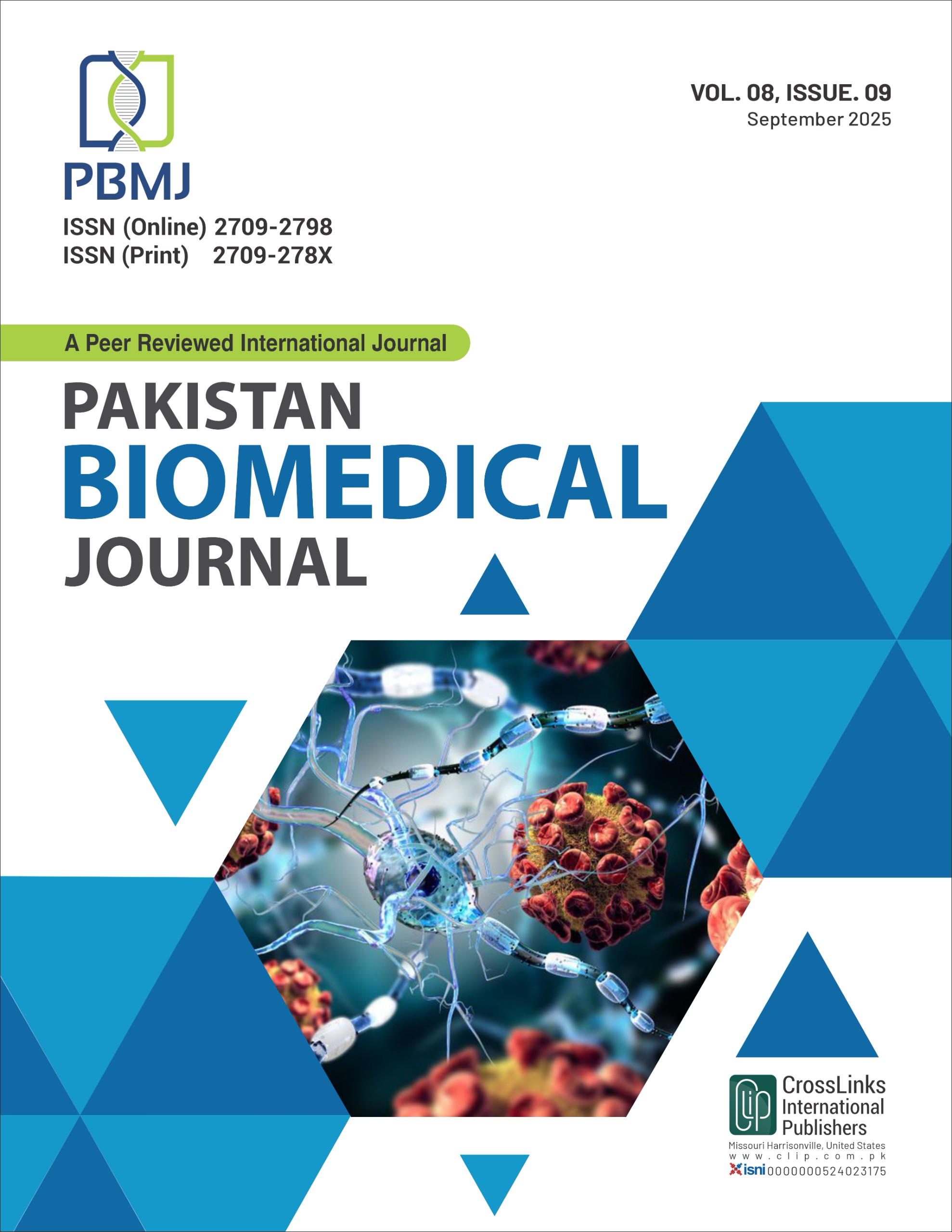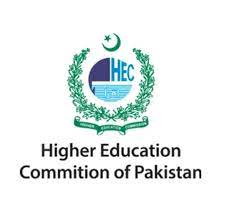Navigating Challenges Evaluating Health System Responses to Burn Injuries in Quetta, Balochistan
Navigating Challenges: Evaluating Health System Responses to Burn Injuries
DOI:
https://doi.org/10.54393/pbmj.v8i9.1288Keywords:
Burn Injuries, Access to Healthcare, Socio-Cultural Barriers, Qualitative ResearchAbstract
Burns are a significant health issue in the population of low- and middle-income countries such as Pakistan. This is especially acute in the resource-strained province of Balochistan, where the healthcare system in terms of assisting burn victims in Quetta, is compromised due to a great number of systemic flaws. Objectives: To assess the effectiveness of the healthcare system to treat burn injuries in Quetta, Balochistan, in terms of analyzing the primary barriers to care, such as infrastructural inadequacy, the lack of staff, and sociocultural issues. Methods: The qualitative research design of semi-structured interviews was ascertained by the 24 interviewees in the semi-structured interviews with the professionals in the field of burn care who could reflect the patients, givers, and policymakers. Primary data were collected at the different health facilities of Quetta. Thematic analysis was able to reduce the wide categories and problems in burn care. Results: The financial aspect was a great concern, and the treatment was prohibitive expensive. Moreover, an increase in the number of delays in seeking care was caused by sociocultural factors, including gender-based decision-making. All these results indicate the existence of significant barriers, which are founded on insufficient investments, the absence of highly qualified staff, and ineffective infrastructure, which lead to the need to establish the overall changes in the treatment of burns. Conclusions: An interdisciplinary Burn Care strategy should be more preoccupied with changes in infrastructure, education of medical workers, and community involvement.
References
Rybarczyk MM, Schafer JM, Elm CM, Sarvepalli S, Vaswani PA, Balhara KS et al. Prevention of Burn Injuries in Low-and Middle-Income Countries: A Systematic Review. Burns. 2016 Sep 1; 42(6): 1183-92. doi: 10.1016/j.burns.2016.04.014. DOI: https://doi.org/10.1016/j.burns.2016.04.014
Forbinake NA, Ohandza CS, Fai KN, Agbor VN, Asonglefac BK, Aroke D et al. Mortality Analysis of Burns in A Developing Country: A CAMEROONIAN Experience. BioMed Central Public Health. 2020 Aug; 20(1): 1269. doi: 10.1186/s12889-020-09372-3. DOI: https://doi.org/10.1186/s12889-020-09372-3
Soedjana H. Mortality Rate of Burn Injury Patients Post Closure of Burn Unit Due to Covid-19 Pandemic. Annals of Burns and Fire Disasters. 2023 Dec; 36(4): 281.
Woolard A, Hill NT, McQueen M, Martin L, Milroy H, Wood FM et al. The Psychological Impact of Pediatric Burn Injuries: A Systematic Review. BioMed Central Public Health. 2021 Dec; 21(1): 2281. doi: 10.1186/s12889-021-12296-1. DOI: https://doi.org/10.1186/s12889-021-12296-1
Nazeer S, Manzoor S, Un Nisa Z, Rana A, Qayyum A. A Qualitative Study on Nurses' Experiences Working in Burn Units in South Punjab, Pakistan. Journal of Health and Rehabilitation Research. 2024 May; 4(2): 805-9. doi: 10.61919/jhrr.v4i2.914. DOI: https://doi.org/10.61919/jhrr.v4i2.914
Coombes J, Hunter K, Mackean T, Ivers R. The Journey of Aftercare for Australia’s First Nations Families Whose Child Had Sustained a Burn Injury: A Qualitative Study. BioMed Central Health Services Research. 2020 Jun; 20(1): 536. doi: 10.1186/s12913-020-05404-1. DOI: https://doi.org/10.1186/s12913-020-05404-1
Chaudhry N, Khoso AB, Kiran T, Blakemore A, Lovell K, Bashir MM et al. Psychosocial and Physical Rehabilitation of Burn Survivors: A Large Multicenter Cluster Randomized Controlled Trial from Pakistan. European Psychiatry. 2023 Jul; 66(Suppl 1): S906.
Keshri VR, Peden M, Singh P, Norton R, Abimbola S, Jagnoor J. Health Systems Research in Burn Care: An Evidence Gap Map. Injury Prevention. 2023 Oct; 29(5): 446-53. doi: 10.1136/ip-2023-044963. DOI: https://doi.org/10.1136/ip-2023-044963
Kumar V, Ali BS, Choudry E, Khan S, Baig K, Durrani NU et al. Quality of Neonatal Care: A Health Facility Assessment in Balochistan Province, Pakistan. Cureus. 2022 Mar; 14(3). doi: 10.7759/cureus.22744. DOI: https://doi.org/10.7759/cureus.22744
Iqbal T, Saaiq M, Ali Z. Epidemiology and Outcome of Burns: Early Experience at the Country's First National Burns Centre. Burns. 2013 Mar; 39(2): 358-62. doi: 10.1016/j.burns.2012.07.011. DOI: https://doi.org/10.1016/j.burns.2012.07.011
Rehan M, Iqbal T, Khan MS, Tariq MH, Khokhar OK, Ain Q et al. Burns During Covid-19 Pandemic: Demographics, Etiological and Clinical Trends in 2021 at the National Burn Care Centre in Islamabad, Pakistan. Annals of Burns and Fire Disasters. 2024 Mar; 37(1): 28.
Sana H, Ehsan AN, Saha S, Hathi P, Malapati SH, Katave C et al. Epidemiological Predictors of Financial Toxicity in Surgical Burn Injuries: A Multicenter, Longitudinal, Cohort Study. Annals of Plastic Surgery. 2024 Apr; 92(4S): S279-83. doi: 10.1097/SAP.0000000000003853. DOI: https://doi.org/10.1097/SAP.0000000000003853
Latifi NA, Karimi H, Motevalian SA, Momeni M. Economic Burden of Burn Injuries in A Developing Country. Journal of Burn Care and Research. 2017 Nov; 38(6): e900-5. doi: 10.1097/BCR.0000000000000515. DOI: https://doi.org/10.1097/BCR.0000000000000515
Reyes A, Ramsey W, O’Neil C, Cobler-Lichter M, Ishii M, Satahoo S et al. 501 A Nationwide Survey of Burn Survivors: Who Is at Greatest Risk for Financial Toxicity? Journal of Burn Care and Research. 2025 Mar; 46(Supplement_1): S102-. doi: 10.1093/jbcr/iraf019.130. DOI: https://doi.org/10.1093/jbcr/iraf019.130
Abubakar AI and Sabo VY. Modifying Burn Care in A Low-and Middle-Income Countries (LMIC) to Meet Global Best Practice: A Burn Unit or Burn Isolation Ward? Burns. 2024 Dec; 50(9): 107212. doi: 10.1016/j.burns.2024.07.016. DOI: https://doi.org/10.1016/j.burns.2024.07.016
Najafali D, Najafali M, Liu H, Arellano J, Rezaei S, Galbraith L et al. 668 Influence of Infrastructure on Global Burn Outcomes: Analysis of the WHO Global Burn Registry. Journal of Burn Care and Research. 2025 Mar; 46(Supplement_1): S229-. doi: 10.1093/jbcr/iraf019.297. DOI: https://doi.org/10.1093/jbcr/iraf019.297
Bryski MG, Azad CL, Etchill EW, Rhee DS. Global Disparities in Burn Outcomes: Does Gender Predict Mortality in the Global Burn Registry? Journal of Surgical Research. 2023 Mar; 283: 459-68. doi: 10.1016/j.jss.2022.10.071. DOI: https://doi.org/10.1016/j.jss.2022.10.071
Mehta K, Arega H, Smith NL, Li K, Gause E, Lee J, Stewart B. Gender-Based Disparities in Burn Injuries, Care and Outcomes: A World Health Organization (WHO) Global Burn Registry cohort study. The American Journal of Surgery. 2022 Jan; 223(1): 157-63. doi: 10.1016/j.amjsurg.2021.07.041. DOI: https://doi.org/10.1016/j.amjsurg.2021.07.041
Masood A, Masud Y, Mazahir S. Gender Differences in Resilience and Psychological Distress of Patients with Burns. Burns. 2016 Mar; 42(2): 300-6. doi: 10.1016/j.burns.2015.10.006. DOI: https://doi.org/10.1016/j.burns.2015.10.006
Jeschke MG, Van Baar ME, Choudhry MA, Chung KK, Gibran NS, Logsetty S. Burn Injury. Nature Reviews Disease Primers. 2020 Feb; 6(1): 11. doi: 10.1038/s41572-020-0145-5. DOI: https://doi.org/10.1038/s41572-020-0145-5
Downloads
Published
How to Cite
Issue
Section
License
Copyright (c) 2025 Pakistan BioMedical Journal

This work is licensed under a Creative Commons Attribution 4.0 International License.
This is an open-access journal and all the published articles / items are distributed under the terms of the Creative Commons Attribution License, which permits unrestricted use, distribution, and reproduction in any medium, provided the original author and source are credited. For comments editor@pakistanbmj.com











